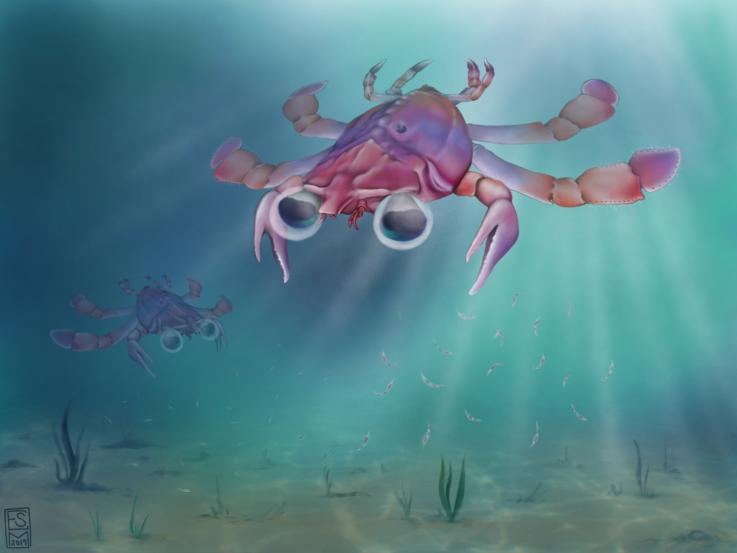Tag: callichimaera perplexa
Callichimaera Perplexa: Bizarre ‘Platypus of the Crab World’ Discovered From 95 Million Years Ago
Article via Newsweek
Researchers have discovered a “unique” 95-million-year-old crab species that casts new light on the evolutionary history of crustaceans.
An international team, led by paleontologist Javier Luque from Yale University, found the unusual specimen—dubbed “Callichimaera perplexa”—in Colombia alongside several other well-preserved fossils in rocks dating back to the mid-Cretaceous period (90-95 million years ago).
The fossil cache included numerous shrimp fossils and other marine creatures, but Callichimaera was by the far the most intriguing, according to the researchers. They described the animal in a study published in the journal Science Advances.
“Callichimaera perplexa is the strangest—and cutest—crab yet discovered,” Luque told Newsweek. “It is in a way like the ‘platypus’ of the crab world. A truly perplexing beautiful chimera, as its name indicates. This new discovery is one of the most exciting fossil findings in the tropics in the last decade. It reveals a long-gone branch in the crustacean tree of life that has never been seen before.”
Furthermore, it was the first arthropod—a large group of animals that includes lobsters, crabs, spiders, mites, insects, centipedes and millipedes—to evolve swimming oar-like legs since the disappearance of “sea scorpions” more than 250 million years ago, according to Luque. In addition, its unique body form “pushes the textbook definition” of what a crab is.
The strange animal was very small—about the size of a quarter—and featured large compound eyes with no sockets, bent claws, leg-like mouth parts, an exposed tail and a long body—traits that are characteristic of crab larvae. The researchers say that several larval traits may have been retained in the animal in a process that could have led to the evolution of novel body plans.
“Callichimaera hints at how novel forms can evolve via the retention and amplification of larval traits in miniaturized adults during development,” Luque said.
“Usually we think of crabs as big animals with broad carapaces, strong claws, small eyes in long eyestalks, and a small tail tucked under the body. Well, Callichimaera defies all of these ‘crabby’ features and forces a rethink of our definition of what makes a crab a crab,” he said in a statement.
The unusual body plan of the newly discovered species provided the inspiration for its name, which derives from the word “chimera”—a mythological creature that contained body parts from more than one animal.
The fossil cache in which Callichimaera was found was first discovered by chance in 2005 when Luque was an undergraduate student studying geology in Colombia.
“During a field expedition, a friend and I were doing geological mapping of an area in the Andes,” he said. “After a long day of walking through the mountains we sat on a hill to take a break. It was already late in the afternoon, and I just decided to swing my hammer one more time to check the rocks we were sitting on. It was there that I discovered a layer in the rock with hundreds of fossils of marine creatures—most of them crustaceans of different shapes and sizes—and among them the ‘beautiful chimera’ that is the focus of our study today.”
“The rocks from where these specimens come were deposited during the mid-Cretaceous in a relatively shallow and narrow inner sea that ran all the way from Venezuela and Colombia to Peru and Bolivia,” he said. “That is why we find marine fossils in rocks that are today in the middle of the Andes.”
In total, the researchers collected more than 70 individual specimens of Callichimaera, including males, females, babies and adults. Despite their small size, the fossils were preserved in “exquisite detail,” including body parts like antennae, sexual appendages, mouth parts and even large eyes.
“It is very exciting that today we keep finding completely new branches in the tree of life from a distant past, especially from regions like the tropics, which despite being hotspots of diversity today, are places we know the least about in terms of their past diversity,” Luque said.


